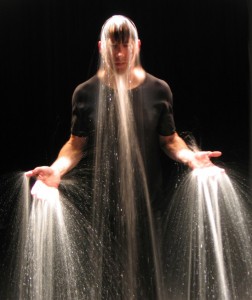THE PENNSYLVANIA Academy of the Fine Arts is known for its focus on the human figure, thanks in part to its collection of works by famed Philadelphia painter Thomas Eakins, who studied there and later taught there. Currently holding the spotlight at PAFA is a touring show of figurative paintings by American artist Eric Fischl, but also worthy of attention is Bill Viola‘s “Ocean Without a Shore,” which is as painterly — and as figurative — as a video can get.
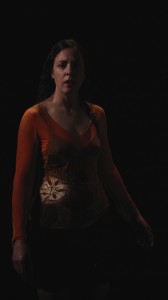
Fischl’s show, here through Sept. 30, deals with suburban ennui, while Viola’s piece is about weightier matters such as life and death. A visit to both constitutes a heady exploration of what it means to be human.
“Ocean Without a Shore” is a three-channel video installation that debuted at PAFA last November. It’s part of the permanent collection.
Curator Julien Robson wanted a video piece that would complement the museum’s traditions and strengths, yet nudge the collection forward technologically. He wanted something by Viola, a major American artist of international acclaim.
“Ocean,” whose subject is the mystery of life, death and the space beyond, is a flashy work with a dramatic soundtrack and compelling images of ordinary-looking people entering and leaving a space through a wall of water. Installed in a room PAFA designed to look like a chapel, the piece weds Hollywood showmanship with traditional humanist subject matter. It should be on the must-see list for any art lover — tourist or resident, Robson said. “It’s a destination piece.”
Robson wouldn’t say how much the institution paid for it, but a representative from Viola’s New York gallery, James Cohan, said: “Bill Viola’s works are made in editions. Individual editions begin at $150,000, and larger installations can be as high as $2 million.”
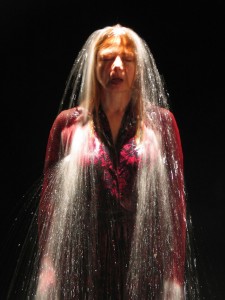
Viola has always been a pioneer in video techniques, a medium that continues to evolve. Viola’s studio “is very much aware that video works will migrate to new platforms as time goes by,” Robson said, “and they obviously keep up to date with technological developments and are a resource for owners of his works.”
But for all the technical wizardry, “Ocean” exists in the figurative tradition of art. Beautiful and haunting, it comes with no political message; the idea is instead spiritual and cosmic. Viola has said that he is influenced by the writings of Senegalese poet Birago Diop and by the concept of the Sufi mystic Ibn Arabi who wrote, “The Self is an ocean without a shore.”
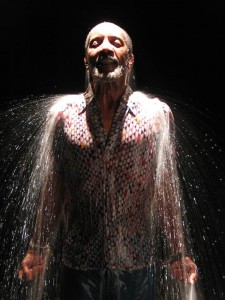
“He’s not ironic,” Robson said. “He’s a traditional artist whose work is a fit with the collection.” Painters like Benjamin West, Henry Ossawa Tanner, Washington Allston and even Eakins are humanist painters who, like Viola, deal with big themes of life, death and spirituality.
“Ocean” is run by computer and plays on three large plasma monitors. The work is 4 1/2 hours long, but it does not have a linear narrative, and it is not meant to viewed in its entirely. “It’s like a painting, you can go in and out of it,” said Robson.
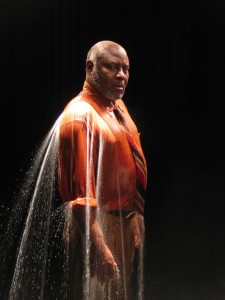
“People are intrigued and captivated by it,” Robson said. “People find it very moving, very profound.” Some find it a little intimidating. One museum guard told Robson that her husband wanted to see the work, but she hadn’t viewed it yet because it scared her.
This major video installation doesn’t hearken a new interest in video at PAFA. Robson said his selection of Viola was a vote for a painterly work that is technologically innovative.
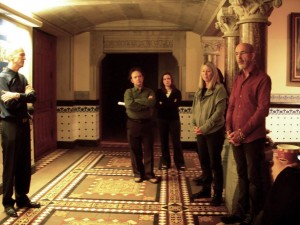
When the curator was pitching the Viola purchase to the museum, he had several meetings with the exhibition committee and the museum’s board of directors. Faculty representative Al Gury, chairman of PAFA’s painting department, was at one. “They turned to me and said, ‘Al, what do you think?’ Maybe they thought as a painter I might not like it. In fact, I think it’s magnificent,” said Gury. “The Viola piece is very much in the tradition of figuration and painting with roots in icon traditions. I thought it was very appropriate to the collection and to teaching.”
Pennsylvania Academy of the Fine Arts, 118 N. Broad St., $15-$10, 215-972-7600, pafa.org.
This article was published in Philadelphia Daily News on July 6, 2012, as part of Art Attack, a partnership between the Daily News and Drexel University supported by a grant from the Knight/NEA Community Arts Journalism Challenge, administered by the Greater Philadelphia Cultural Alliance.


